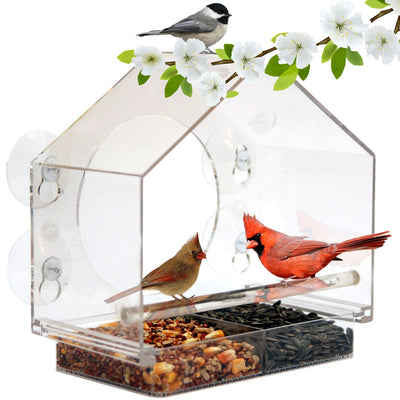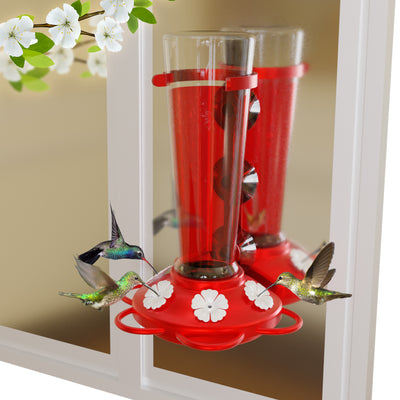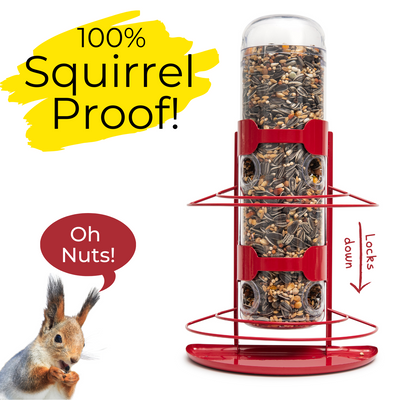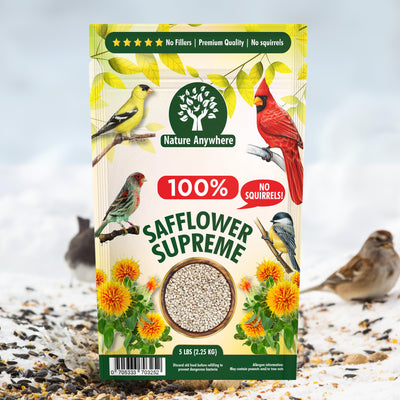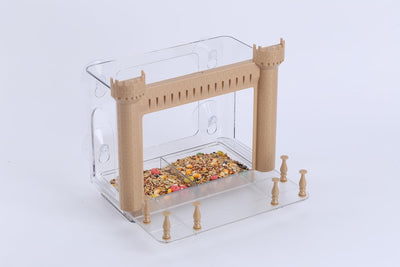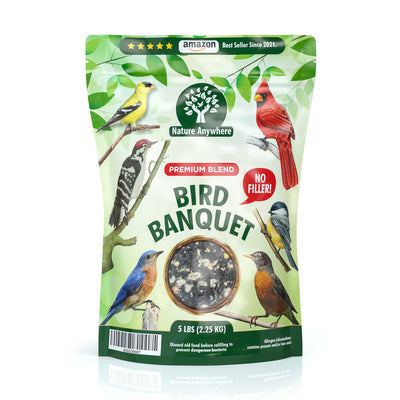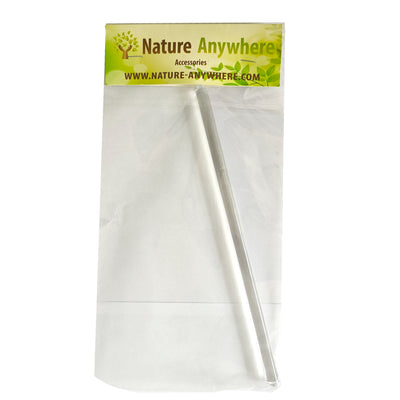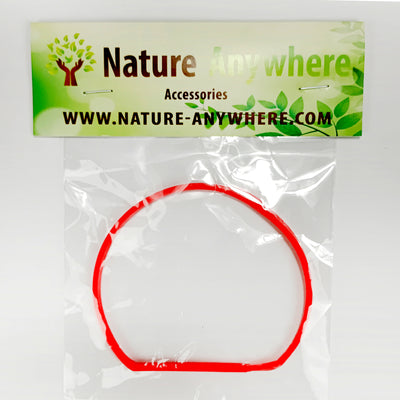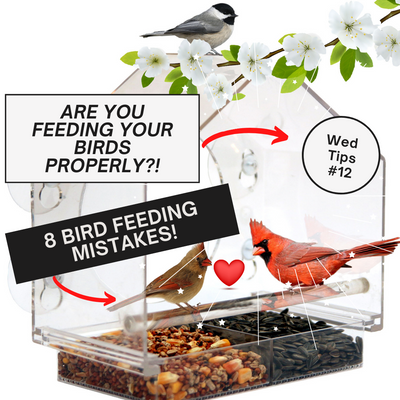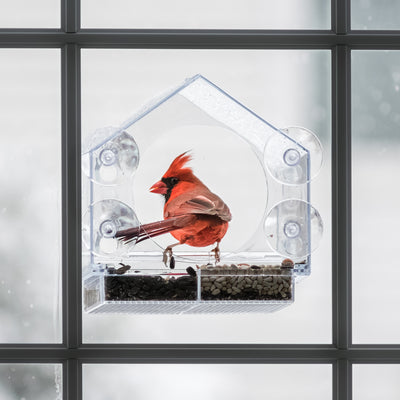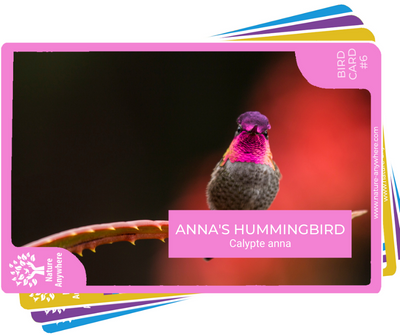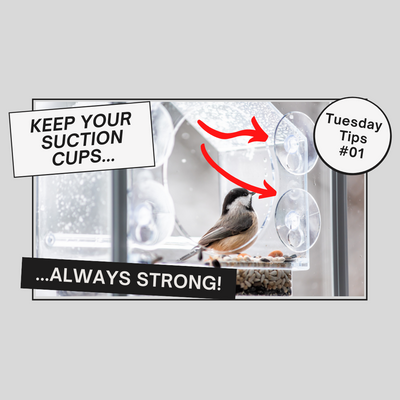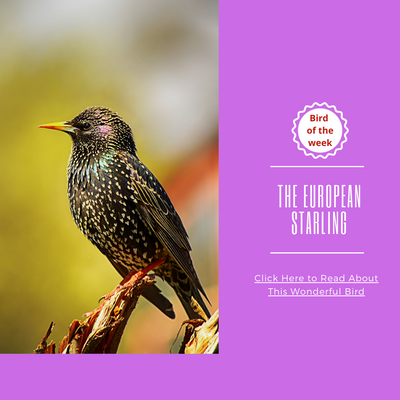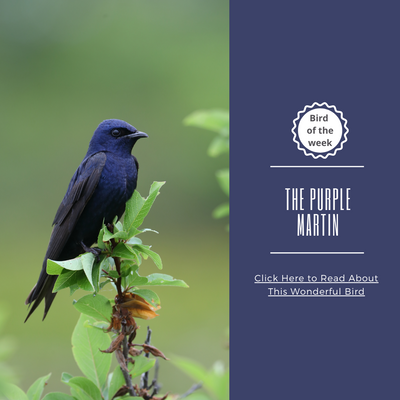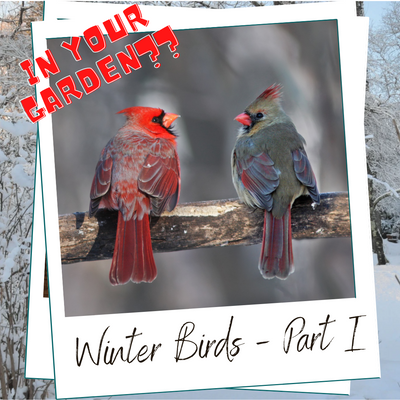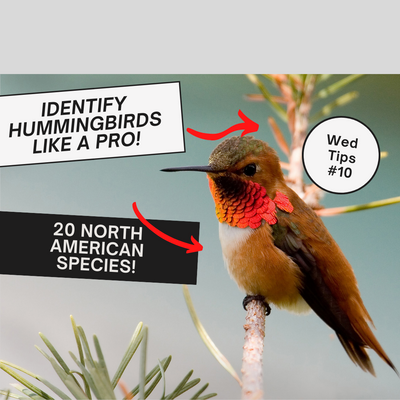IMPORTANT BIRD-FEEDING TIPS! How can we better feed our birds, avoid diseases and keep our avian guests safe.

There’s a nasty rumor going around that bird-feeders can spread diseases and therefore are best avoided all together. Well, it can be partly true, at least the disease part. But we need to shed light on the fact that bird-feeding can be safe and that we don’t have to give up on such a fulfilling pastime that keeps millions of Americans happy and millions of birds cheerful.
Let’s break it down to a few easy steps that we can take to avoid trouble at the feeder:
EASY TIPS TO KEEP YOUR FEEDER CLEAN AND HEALTHY!
IMMEDIATE CLEANLINESS
- Every time you refill your feeders, give them a good shake to remove the seeds that have stuck to the side panels. Throw away any seeds that are wet or clumped together.
- If the seeds still stick, use an old paint brush or tooth-brush or any utensil that can clean away the stubborn seeds.
- Wash your hands thoroughly after refilling or cleaning your feeders.
ONCE-IN-A-WHILE CLEANLINESS
- The #1 cleanliness rule when it comes to bird-feeders: Every 2-3 weeks, disinfect all your feeders by cleaning them with a bleach solution: one part bleach to nine parts warm water. Use latex gloves. Don’t return the feeders to their places until they are completely dry.
- When the hulls start piling up under your feeder, and bird droppings are amassing, move the feeders to another location for a short while and rake the hulls and droppings away. If there’s grass underneath, make sure enough time has passed for it to grow back.
SEED MAINTENANCE
-
Seeds should be stored in an air tight, clean container. Store them in a dry and cool area.

- Moisture is anathema to seeds. If the seeds become wet or moldy throw them away. When it’s raining or snowing, use only covered bird-feeders to keep the seeds dry and healthy.
- Fill the feeders with a little bit of seeds at a time. The seeds will likely be gone by the evening, so when the “unwanted” nocturnal guests arrive, i.e raccoons, opossums, bears, deer and various rodents, there will be no meal for them. A good way to make sure that they won’t return.
AVOIDING DISEASES
- Seeing a sick or dead bird at your feeders, means taking your bird-feeder away – but not for long. Report the sick bird to your local wildlife officials, so they can enter this event in their data. If you can, remove the sick bird/s yourself or ask your local municipality officials to remove it for you. Clean the bird feeder thoroughly and don’t put it back out for a few weeks so the healthy birds stay away from the “scene of the crime” and the affected area. After a few weeks have passed, when all is cleared out, you can replace the bird feeder so your regulars can come back to their daily perch.
-
Suet is a wonderful source of protein for the birds, especially during the winter, migration or mating season. Summer is little bit tricky as the suet can heat up pretty fast and turn bad. Either use seeds in tube or window feeders, or foods that are bird-appropriate. It is possible to keep the suet feeders but use heat-resilient kind to keep the birds safe.

- Yes, grease, oil and petroleum jelly and other such substances are recommended to spread on the poles of your feeders to curb squirrels, ants and other invaders - however avoid it. These substances can ruin their feathers as they are impossible to preen or wash – even in bird-baths - and can cause diseases, flight complications and difficulties to create heat insulation. To avoid squirrels, try pole-mounted baffles. To avoid ants, use an ant-moat that prevents ants from reaching the feeder like this hummingbird feeder.
THE BEAUTY OF BIRD-BATHS
-
This brings us to bird baths: if you can have a bird-bath in your garden, it can literally be a life saver for the birds. They serve not only as a water source but also as a bath. If your birds do get covered in rancid suet or other dirt sources, bird-baths are the perfect solution. Even for us humans, bird-baths are not only a sight for sore eyes (and ears!) but can also be a meditative item to have in your garden.

How to attract more hummingbirds, what to feed them and keep the feeders clean
AVOIDING WINDOW-KILLS AND VACATION SOLUTIONS
- Window kill is always heart breaking. Birds who can't see windows and fly right into the clear glass panels are often injured if not dead. Window feeders are often a great way to prevent these tragic incidents. These window feeders are not only a source of nutrition - but also a signal for the birds to slow down and avoid collision.
- Moving away or on vacation: Though birds only eat 25% of their daily intake at your feeders, it’s best to wean them slowly from your bird-feeder for a week or so if you are planning on going away for a while or moving away entirely. Either ask a neighbor you trust to continue filling your bird feeder or slowly feed them less and less until they get the hint.
TIPS FOR PROPER BIRD-FEEDING
WHAT KIND OF SEEDS?
-
Offer your flyers a mix of seeds that will attract different songbird species. Black-oil sunflower are the most popular seeds with many birds, as their thin shells are easy to crack and their large nutmeat inside are nutritious to eat.

- To see the gorgeous crimson cardinals, offer the thicker shelled gray-striped sunflower seeds or safflower seeds. These nuts will also attract grosbeaks, blue-jays, chickadees, titmice, and nuthatches.
- For the small flyers, such as all finches, Indigo Buntings, Pine Siskins, and Common Redpolls use Nyjer/thistle seeds – who love these smaller, black, needle-like seeds which are easier for them to munch.
SEEING ONLY PIGEONS AND OTHER HOGGING BIRDS AT THE FEEDER?
- If blackbirds, pigeons, or house sparrows hog the feeder, give ground/platform feeders a break. Place black-oil sunflower seeds in tube or hopper feeders that are harder for them to get to, until they get the hint and look elsewhere for their grub.
- Clean all hulls off platform feeders and seed trays daily.
AND FINALLY - MAKE THE BIRDS FEEL AT EASE!
- To attract more birds and also to add to the beauty of your feeder: add branches, and other natural perches around your bird feeder. It makes the birds feel more comfortable and “at home” as they peck away.
- Make sure your cats aren’t close to the feeders. Look after the safety of your birds.

